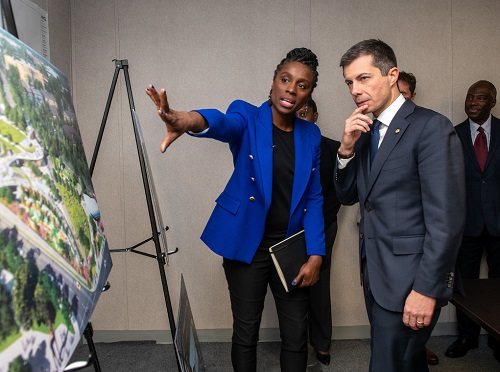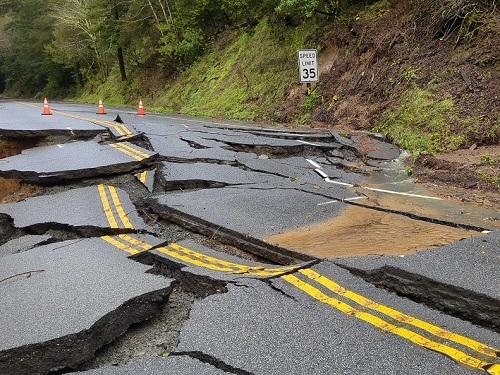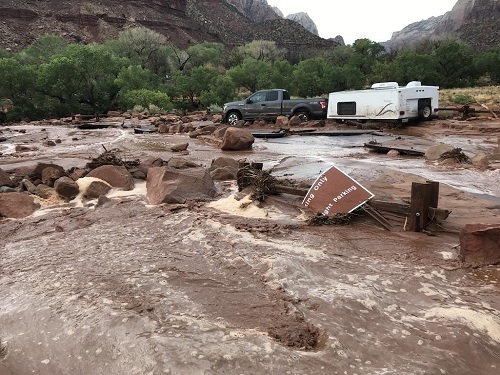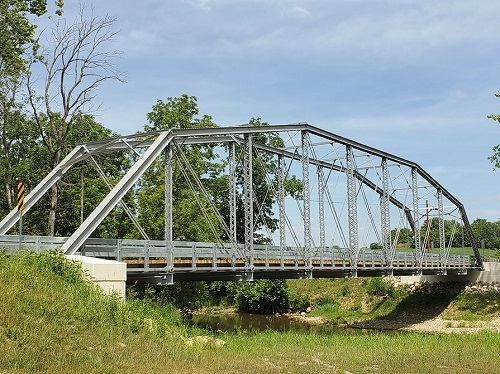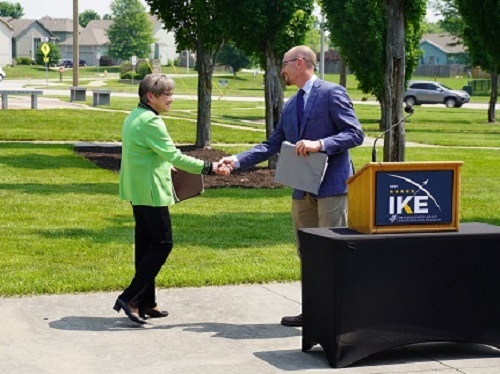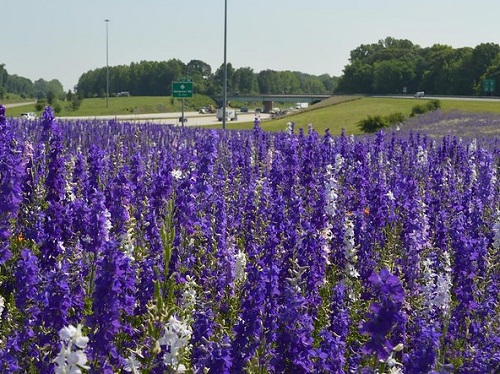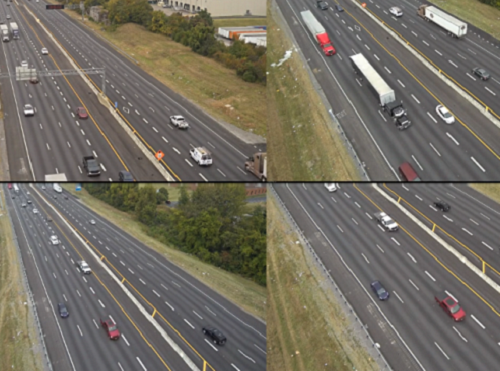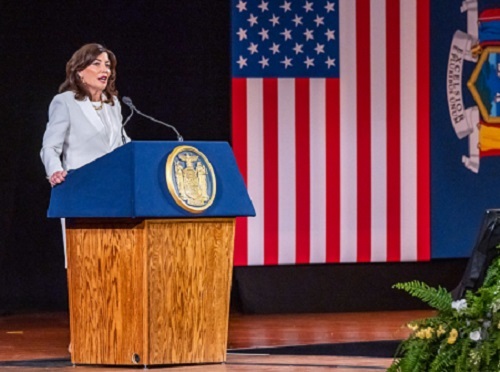The U.S. Department of Transportation recently awarded $23.6 million in Thriving Communities Program or TCP grants to three national “capacity builders” and six regional providers that will provide roughly 112 communities – including 12 tribal nations – with technical assistance so they can access federal infrastructure funding and resources.
[Above photo by the USDOT]
Managed by the Build America Bureau within USDOT, the program’s “technical assistance” includes a variety of tasks, from preparing application materials and predevelopment activities, to deploying innovative community engagement, workforce development, and clean technology strategies.
The agency said the overall TCP initiative – created by the Infrastructure Investment and Jobs Act or IIJA – provides two years of no-cost technical assistance to help advance projects that improve health outcomes, reduce housing and transportation cost burdens, improve housing conditions, preserve or expand jobs, and increase reliable mobility options for “disadvantaged communities,” especially small, rural, and tribal ones.
USDOT noted that, out of the 64 communities selected to receive $22 million in TCP grants in 2023, some 37 have now also won federal funding for their communities through various USDOT discretionary grant programs such as Safe Streets and Roads for All program, the Rebuilding American Infrastructure with Sustainability and Equity or RAISE program, and the Rural and Tribal Assistance pilot program.
“The Thriving Communities participants have proven that this technical assistance model can tremendously impact their success rate not only in competing for federal grants, but also in better utilizing innovative solutions to deliver their projects more efficiently and cost-effectively,” said Morteza Farajian, executive director of the Build America Bureau, in a statement.
The three national “capacity builders” receiving fiscal year 2023 TCP funds are:
- Rural Community Assistance Partnership Incorporated, in partnership with Community Engineering Corps, Communities Unlimited, Great Lakes Community Action Partnership, Midwest Assistance Program, National Association of Development Organizations, RCAP Solutions, and Rural Community Assistance Corporation, received over $4.2 million to support 16 “main street” programs. USDOT said “main street” funding is focused on tribal, rural, and small-town communities and the interconnected transportation, community, and economic development issues they face.
- Abt Associates Inc., in partnership with EPR, P.C., Equitable Cities, Morgan State University, Nelson\Nygaard, Safe Routes Partnership, and Smart Growth America, received over $4.9 million to support 20 “complete neighborhoods communities” projects. Those projects focus on urban and suburban communities located within Metropolitan Planning Organization planning areas working to better advance complete streets policies and coordinate transportation with land use, housing, and economic development.
- The Conference of Minority Transportation Officials or COMTO, in partnership with AECOM, Intelligent Transportation Society of America, Accelerator for America, Two Degrees, ReConnect Rondo, and MWDBE Training Academy, received over $4.2 million to support 16 “networked communities” projects. Those projects are focused on communities located near ports, airports, freight, and rail facilities to address mobility, access, housing, environmental justice, and economic issues.
USDOT also provided $1 million to $2 million in funding each to six projects benefiting 60 communities in total through a new TCP Regional Pilot Program; a program that allows participants to support TCP activities to communities within their jurisdictions at a state or regional scale. Two projects overseen by state departments of transportation received funds as part of this TCO pilot program, USDOT noted:
- The Alaska Department of Transportation and Public Facilities in partnership with the Alaska Municipal League, receiving $2 million to support 18 communities, four of which are tribal nations.
The New York State Department of Transportation, in partnership with the with New York State Department of State and ICF Incorporated, received over $1 million to support five communities: the Town and Village of Alfred, the Village of Dolgeville, the Village of Margaretville, the Town and Village of Massena, and Wyoming County.

